As a nation, we like to think of ourselves as conservation-minded, but that hasn’t always been the case. Sarah Ell’s new book Lost Wonders highlights a range of the ‘vanished creatures of Aotearoa’, as well as bring our attention to some of the species that are on the brink today. Author and environmental educator Linda Jane Keegan interviewed Sarah to discover more about the development of the book and her process.
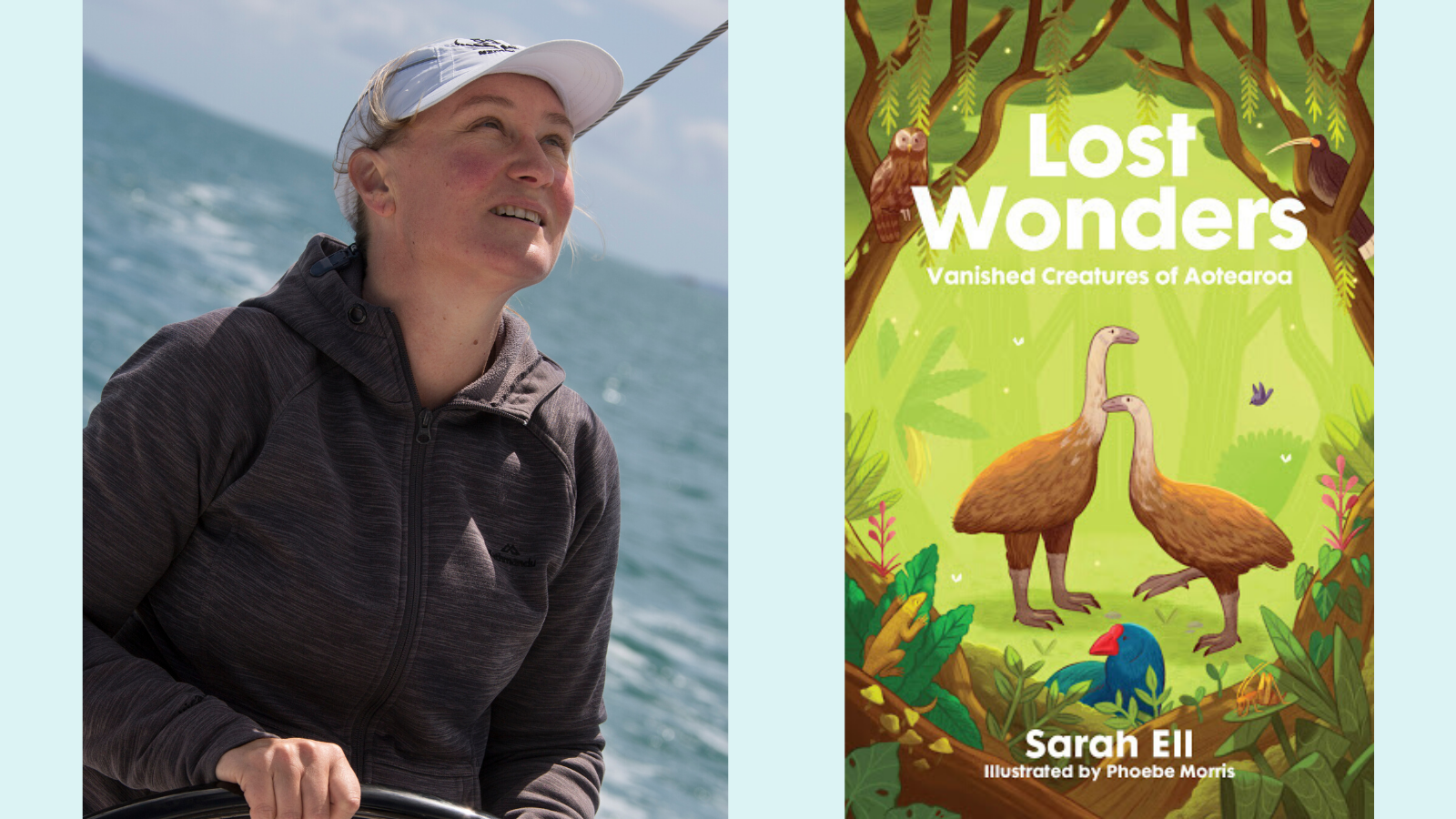
Loss of species worldwide is now being called the ‘sixth extinction’, making Sarah Ell’s Lost Wonders: Vanished Creatures of Aotearoa seem more pertinent than ever.
In this non-fiction chapter book, Sarah gracefully describes losses of New Zealand’s fauna at the hands of both early Polynesian and European settlers, species that have returned from the brink, and those that are teetering on the edge. The big names of moa and Haast’s eagle are in there, and so too are the underdogs like the piopio (an extinct bird), grayling (an extinct fish) and rare plants known only by their Latin names.
In her final words, Sarah encourages readers to take action to help prevent further extinctions – a hopeful plea to our children and their generation. Phoebe Morris’ delightful animal illustrations at the beginning of each chapter have an innocent softness about them, almost as if they are smiling, and blissfully unaware of the fate that awaits them.
Sarah, a born and bred Aucklander, wrote most of the book while undertaking a residency provided by the New Zealand Society of Authors Auckland Museum Research Grant. I talked to her about how she came to write the book, some of the processes behind it, and how writing fits into her life. It is notoriously difficult to earn a living as a writer in New Zealand, and Sarah graciously shared how she makes ends meet and how having children slowed down her writing. It’s reassuring and refreshing to have an insight into the reality of a writing career and raising a family, and it seems that as her children have got older she is making a comeback, with Ocean: Tales of voyaging and encounter that defined New Zealand published in 2018, and two books in the NZ Series – Pioneer Women and Volcanoes and Earthquakes – published in 2019.
Lost Wonders is a wonderful introduction to New Zealand’s extinction history for readers young and old, delving into their demise without being too grim. Here, Sarah tells us how she came to write about our vanished and vanishing wildlife.
You’ve written about other aspects of New Zealand’s history. What sparked your interest in this particular topic?
This book has actually had an extremely long gestation! When I was about 12, I read a book called The Auk, the Dodo and the Oryx, by Robert Silverberg, and was fascinated by the extinction stories it told. I decided then that one day I would write a book telling the stories of the lost things of New Zealand, and now, nearly 40 years later, here it is!
I was also brought up in a conservation-minded household – my father was the national president of Forest & Bird for a time – and so extinct, rare and endangered species have always interested me.
How does the final concept differ from your original idea? How much did the content have to change once the design and layout started?
For a long time, I’d thought about doing it more as an illustrated book, with lots of photos and fewer words, but there just aren’t that many images of many of our extinct species. My publisher, Jenny Hellen from Allen & Unwin, was also keen to pitch it at an older audience, independent readers from eight and up, and that appealed to me because it meant I could go more in-depth with the stories. So it ended up being very similar to Silverberg’s book in that way.
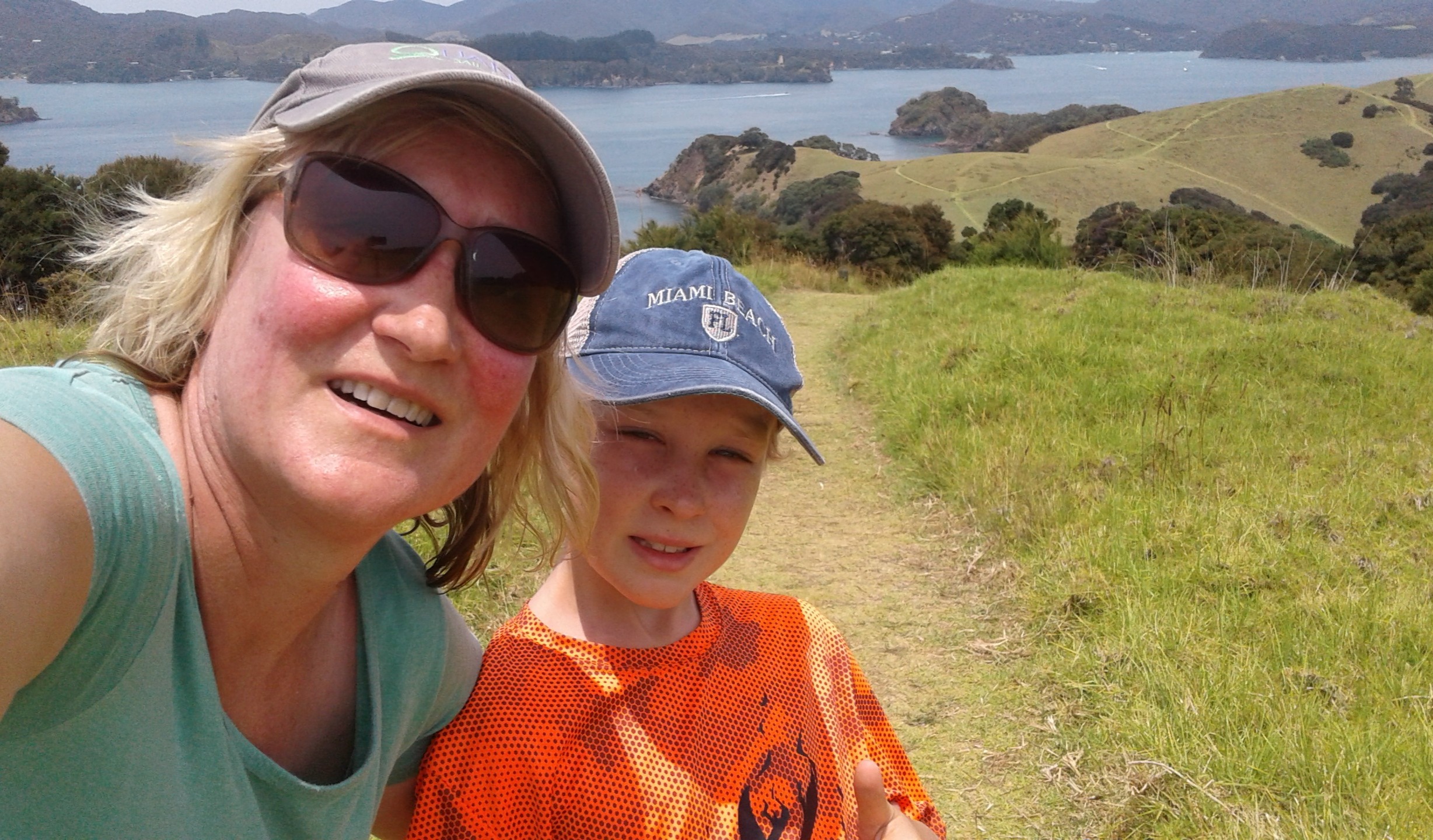
How did having access to museum resources shape the content of the book?
Getting the Auckland Museum/NZSA grant last year was critical, because it enabled me to poke around into all sorts of arcane stuff in the museum library, and was able to access a lot of journal articles and scientific publications you can’t necessarily get to otherwise. The museum is part of a worldwide project, the Biodiversity Heritage Library, through which lots of original texts are now available online. I still wanted to keep the book accessible and not too scientific or academic, though, in keeping with its intended audience.
Why did you decide to include species on the brink as well as extinct species?
Once again, I was inspired by Silverberg’s book, which included a section on species which were at risk of extinction. Interestingly, some of the species he highlighted have undergone recoveries since the book was written in the mid-1970s, but of course a lot more species have become even more at risk. I wanted to highlight the fact that we can’t feel smug about how many of these species became extinct in the 19th and early 20th century – there are many more species that could be lost in our lifetimes if we don’t act.
I wanted to highlight the fact that we can’t feel smug about how many of these species became extinct in the 19th and early 20th century – there are many more species that could be lost in our lifetimes if we don’t act.
What were some other interesting biota or things you learned about that you didn’t have room for in the book?
That was one of the biggest challenges for me – stopping myself putting everything in the book! Unfortunately, there are many other native species which have also become extinct which I wasn’t able to go into in detail. I really wanted to include species other than birds, though, to include things kids might not necessarily think about – fish, bugs, beetles, worms, plants. We can’t think ‘oh, it’s okay if we lose a few bugs’, because they all have a critical role to play in New Zealand’s biodiversity.
What do you hope others will gain from reading the book?
I am a firm believer that you can’t care about something you don’t know about, so my hope is that by telling these stories, young New Zealanders can learn about what has already been lost and become active in trying to save what is left. I’m not in a position to do active conservation fieldwork, so I see my part to play as being someone who spreads the word about our unique and amazing flora and fauna and what we can do to save it. I don’t want readers to feel sad – and there are some sad stories in the book, of the wastefulness of the loss of these beautiful creatures – but to feel motivated to stop it from happening again. Don’t get mad, get even!
I don’t want readers to feel sad … but to feel motivated to stop it from happening again.
How much of the book was written during your residency?
Pretty much all of it! Being able to write in peace and seclusion at the Michael King Writers Centre for four weeks (broken up throughout the year) was an amazing gift and I was hundreds of times more productive there than I can ever be at home! It was great to be able to leave out all my books and papers and research all over the desk and room and just get into writing each day, without worrying about the housework. I would heartily recommend a sojourn at the centre to anyone who wants to really get words on the page (or the screen).
You first discussed this project with your publisher a decade ago. How does that compare to the timelines for your previous books?
Well, that sounds like a long time, but over that 10 years I had two children, which kind of held me up a bit! As I mentioned, I’d had the idea percolating away for decades, but it wasn’t until I had the incentive of applying for the museum grant that I really kicked it back into action. And then once we decided we wanted to get the book out as quickly as possible, it was go go go – I wrote it in about five months flat. Nothing sharpens the mind like a deadline!
I’d had the idea percolating away for decades, but it wasn’t until I had the incentive of applying for the museum grant that I really kicked it back into action.
What percentage of your earnings comes from writing books? What else pays your bills?
I work as a freelance writer for publications including the NZ Herald and Boating New Zealand, and as an editor, proofreader and project manager for various trade publishers. If someone wants to pay me to write something, I’ll write it! That’s why it was so great to get the grant – to make up for the weeks I spent writing when I wasn’t earning. It’s a very hard juggle, to have a creative output and also pay the bills. Everything I earn from writing books is just ‘pin money’, really – that’s why it’s so important that writers are supported by grants and initiatives like the Public Lending Right.
[The Public Lending Right for New Zealand Authors is a payment scheme established for authors, illustrators and editors to acknowledge that their books are available to people accessing New Zealand public libraries.]
Which of your books are you most proud of? Why?
Hmm, this is like asking if I have a favourite child (I don’t, BTW!). I’m always most enthusiastic about the one I’m writing at any one time, because I haven’t had to read it over and over during the editing and proofing process.
I am also proud of the fact that I have nearly finished writing my first adult novel, which is a completely different kettle of fish to all the other writing I have done. It was my Master of Creative Writing project and I have been working on it for two years, on and off. It’s a historical novel set around the time of the Tarawera eruption, and it’s turned out quite differently to what I expected when I started.
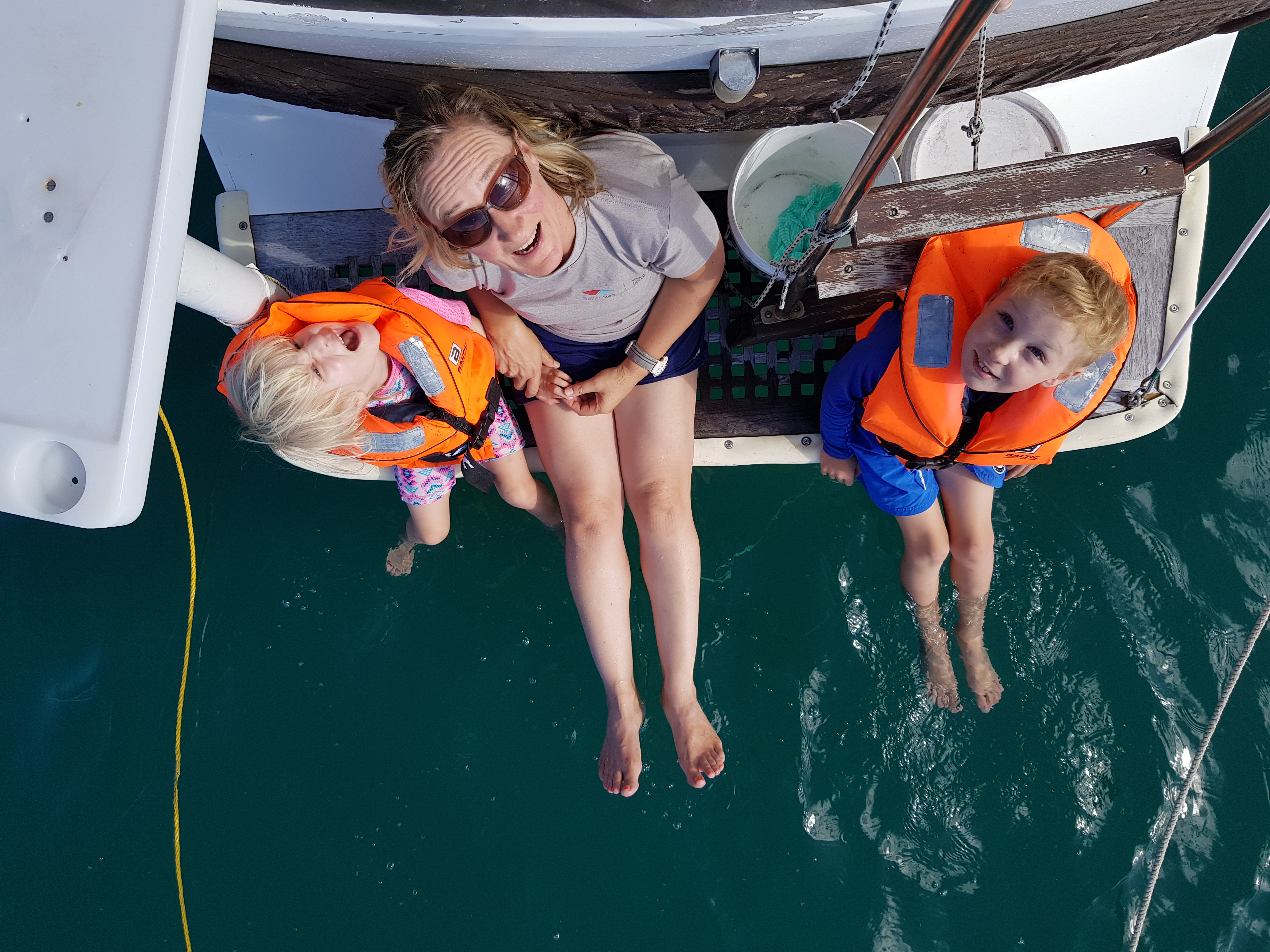
From new idea, to research, to writing, to editing, and everything in between – what’s the most enjoyable part and the most challenging part of the process?
My favourite part of writing are the days/hours/minutes when I am in a ‘flow’ state, when the words seem to come out of my fingers without me consciously thinking what they are going to be… this is an easier state to get into when writing fiction, because you don’t have to go back and check or look up facts all the time, but you can still get on a roll on non-fiction too. I love it when an idea or a phrase or a whole section comes to me when I’m out running or when I’m not looking directly at the work but letting it percolate in the back of my head.
I do a lot of ‘head writing’ – just thinking about and around the project, so that when I sit down to write I can churn out quite big chunks at a time.
The most challenging part is going through the editor’s mark-up and queries and seeing everything I could have/should have done better, and how many times they have saved my arse!
Do you prefer writing for children or adults?
I like writing clear, easily understandable prose which is easy to access, whether that’s for adults or kids. People think writing for kids is easier because children’s books are usually shorter, but in fact, I find it harder because I am always trimming, cutting, trying to be more concise. There is less room for waffle.
People think writing for kids is easier because children’s books are usually shorter, but in fact, I find it harder because I am always trimming, cutting, trying to be more concise.
What do you do when you’re not writing?
Well, I have two children, aged seven and nine, so… but seriously, I freelance when the kids are at school, and I sail competitively. I like to run, as I find this the best thinking time, and play squash and do yoga. As a family we spend a lot of time in the outdoors, exploring New Zealand’s natural and historic heritage, and going away on my husband’s family’s cruising boat. It’s how I was brought up – learning about the natural world through observation and experience – and I want to give that gift to my kids, too.
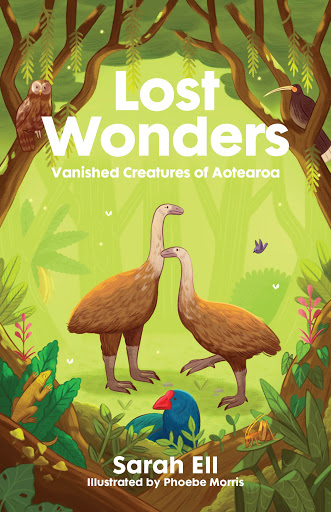
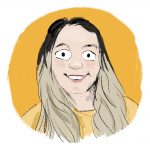
Linda Jane is a writer of picture books, poetry, essays and science. Her background is varied, including work in ecology, environmental education, summer camps, and a community newspaper. She is Singaporean-Pākehā, queer, and loves leaping into cold bodies of water. She was previously lead editor for The Sapling.



